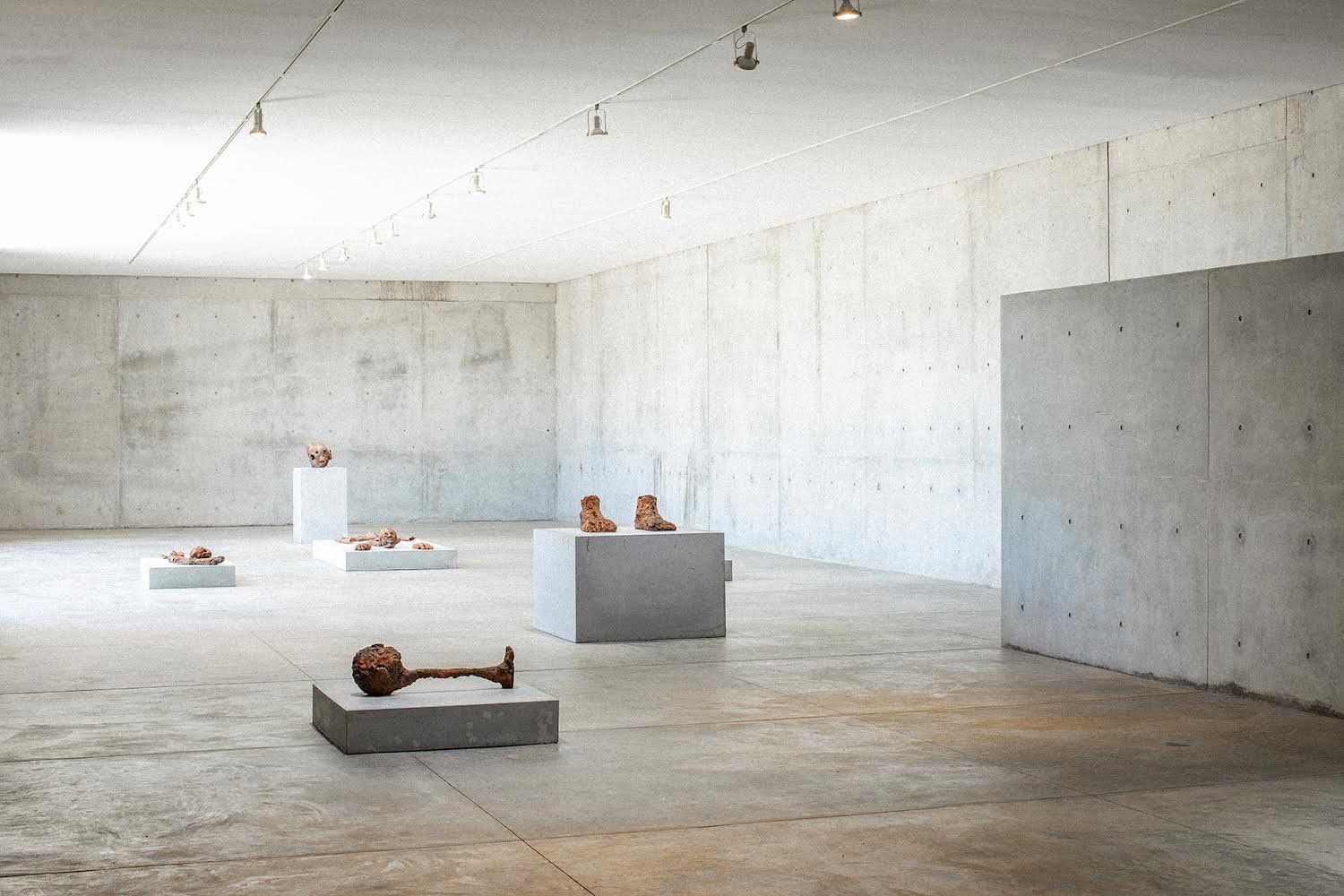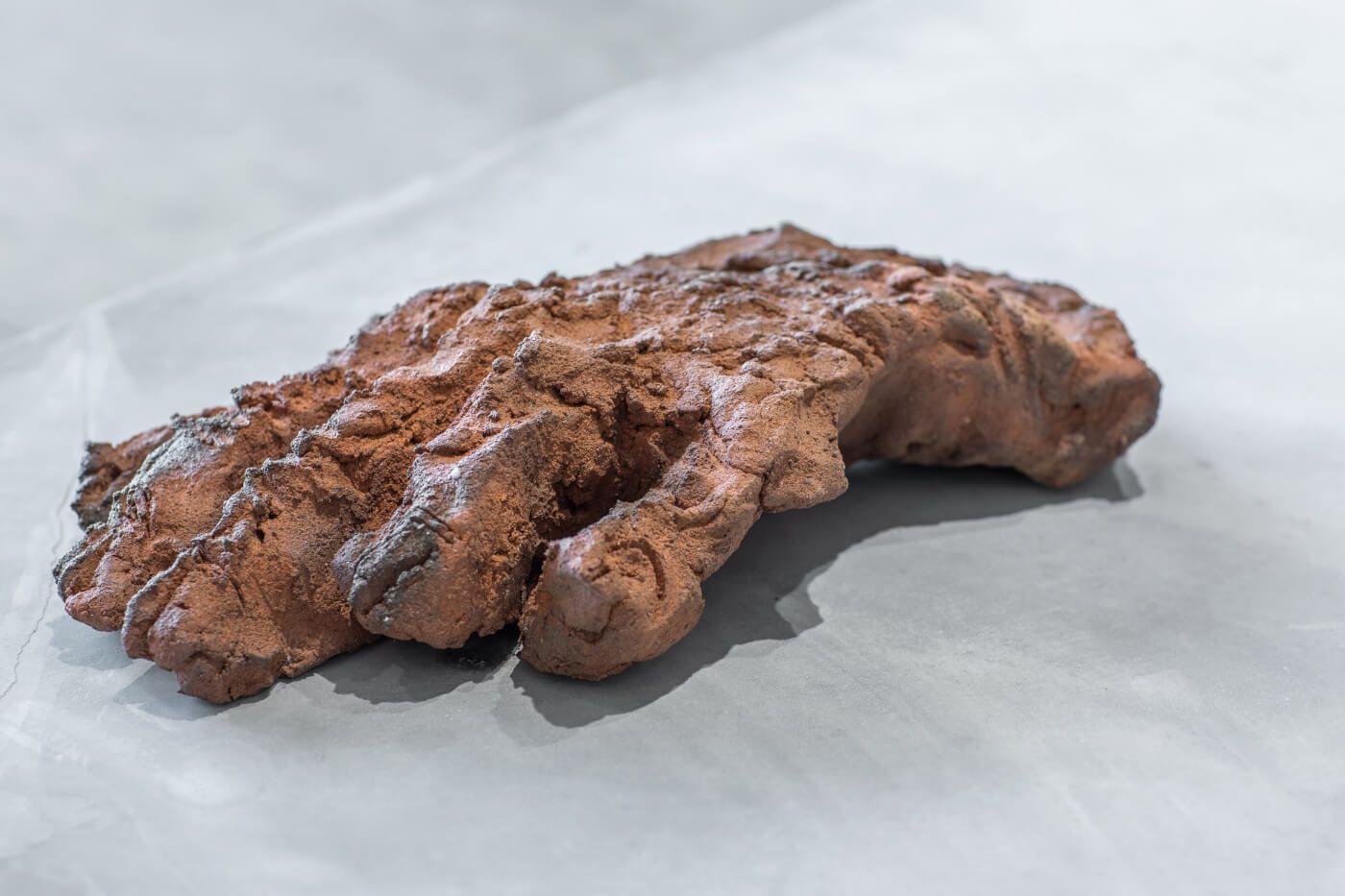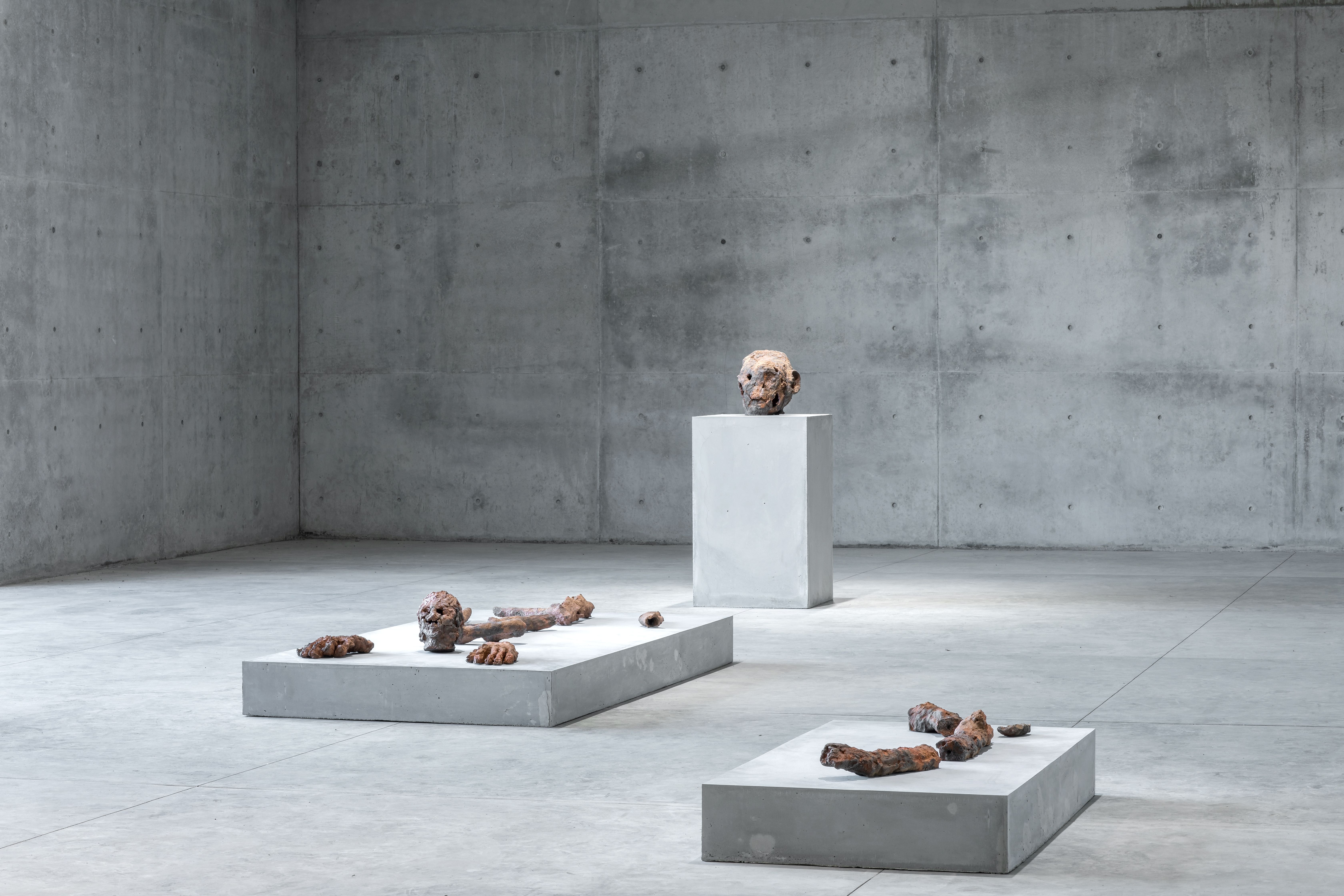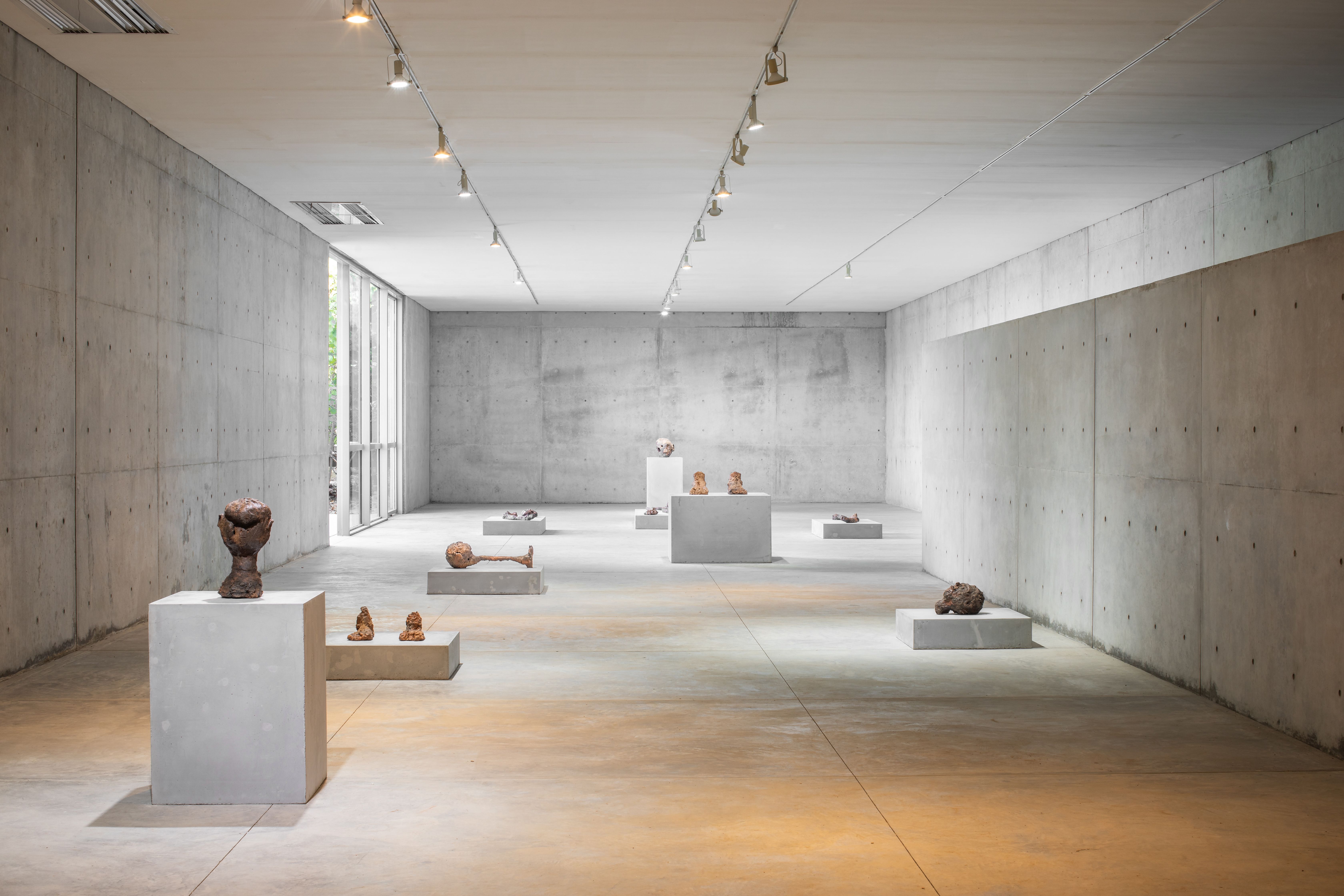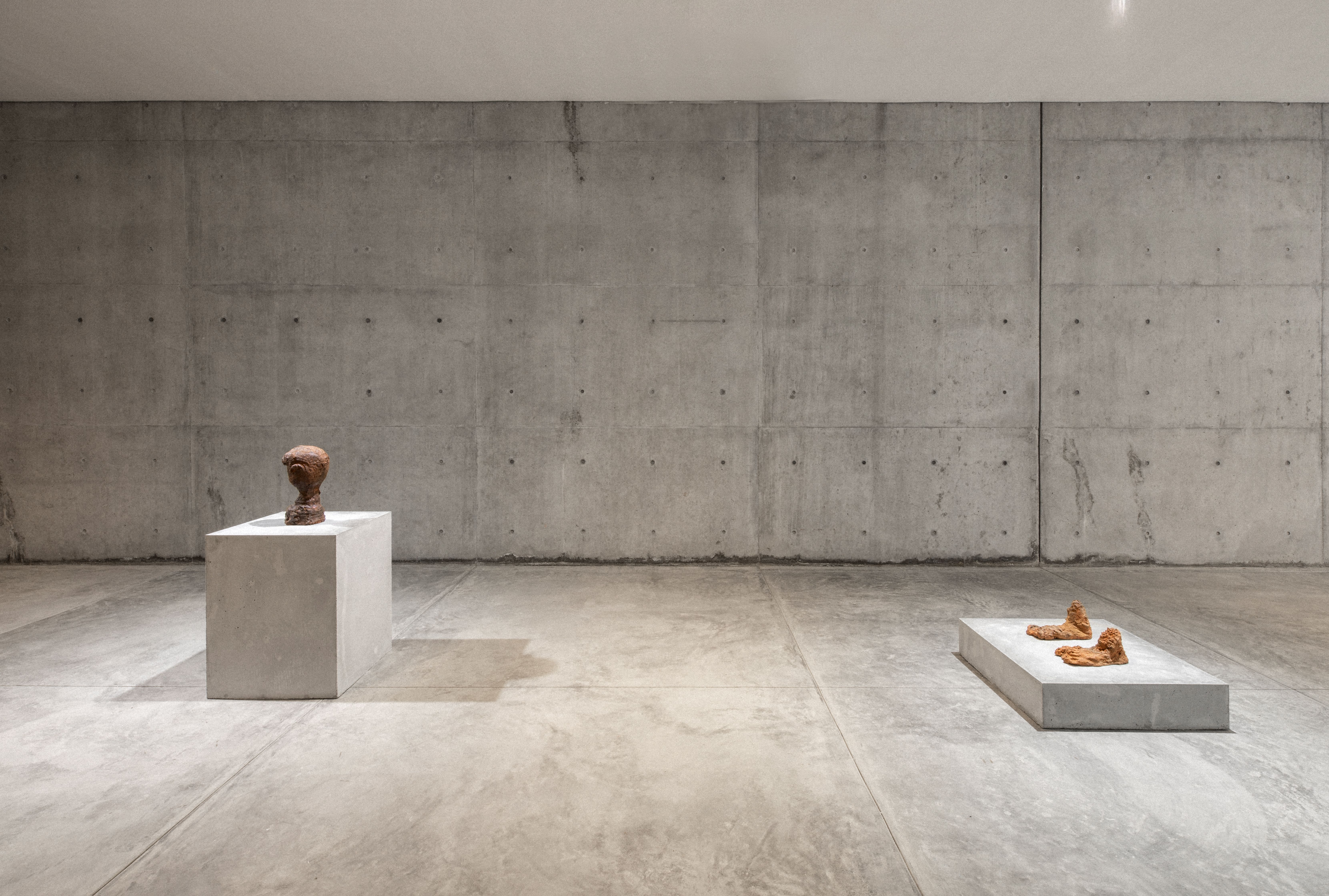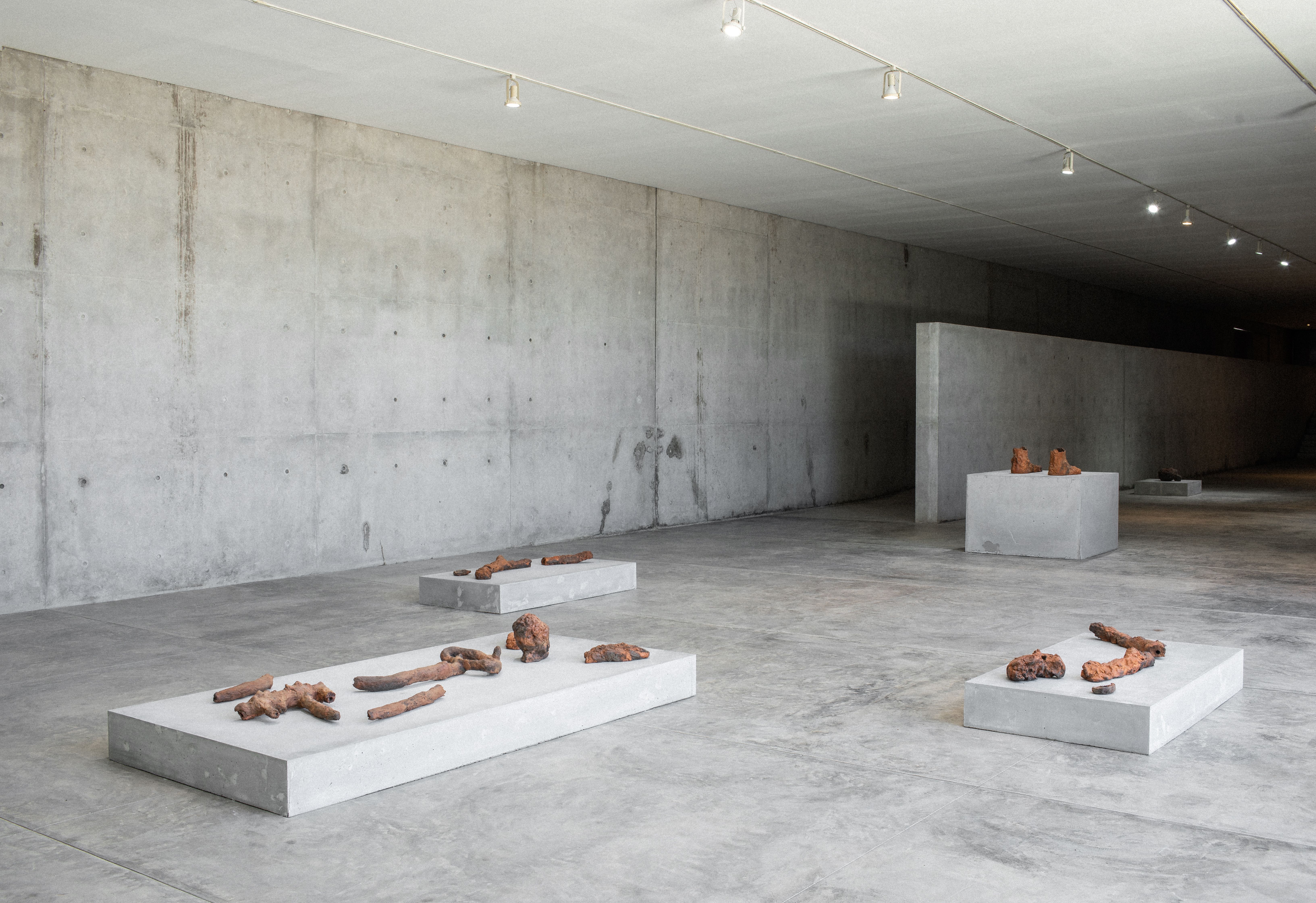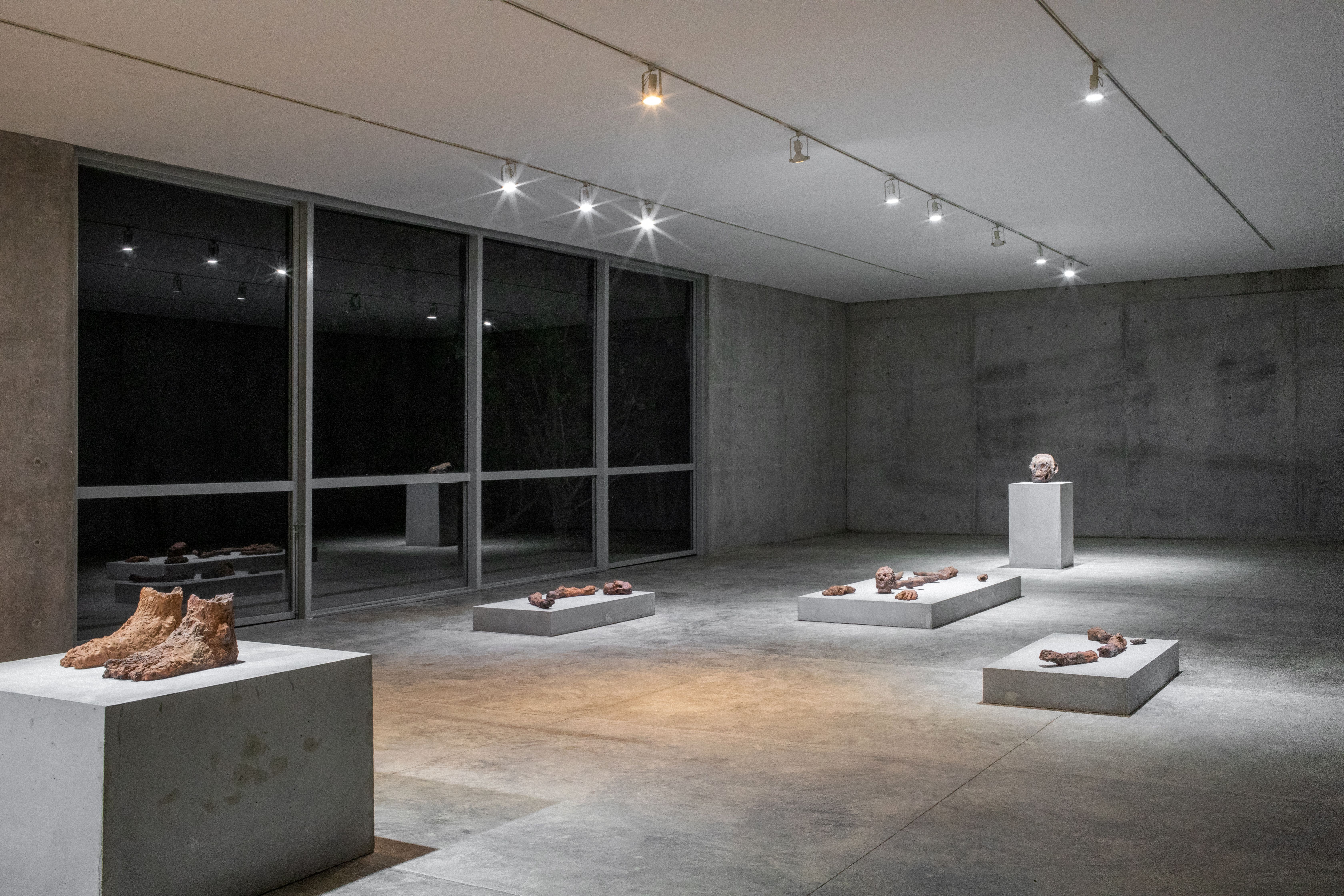Huma Bhabha
February 12 – December 31, 2022
Casa Wabi Puerto Escondido
Touching Earth
Huma Bhabha’s new body of work was made during a three-week residency at Casa Wabi in early 2022. She traveled from Poughkeepsie, a small city on the Hudson River north of New York City, escaping winter and discovering the Oaxacan coast. Alongside a group of fellow artists in residence — each making work in their own studios, sharing meals and the experience of this unique meeting of landscape, culture, and Tadao Ando’s architecture – Bhabha has experimented with local materials and traditional methods to create an installation that brings into dialogue with this remarkable place her own very distinctive aesthetic.
When invited to propose an artist for Casa Wabi I immediately thought of Huma. Our first curatorial encounter was in 2010, when I included her work in Statuesque, a Public Art Fund exhibition at City Hall Park in New York City. It considered ways an international group of artists had renewed interest in sculptural figuration. Huma showed The Orientalist, 2007, becoming her first public art installation. Her often improvisatory artistic language, eclectic interests in art history, popular culture and mythic forms, suggested to me that time spent at Casa Wabi could only inspire.
Bhabha quickly felt a sense of connection to the place. She grew up in Karachi, Pakistan, close to the beach on the Arabian Sea. She found parallels in a landscape at once demanding and nourishing, hardy vegetation resilient enough to thrive in salt air and intense sun, a local cuisine of strong flavors with spice and heat, brightness and crunch. As travelers, such rhymes help to organize our experience.
Into this landscape Ando’s elemental forms inscribe a powerful presence. His use of the palapa recognizes and refines the local vernacular. At the same time, his monumental, axial plan, dividing wall and series of concrete structures remind me of the imposing geometries of Ancient Egypt. Think of the mortuary temple of Hatshepsut, dramatically set into its mountainous landscape. There’s something tomb-like in his design of the Casa Wabi gallery. The space, reached via an enormous, very heavy, sliding metal door is set below the grade of the entrance. One may descend from a landing into the cool, rectangular concrete room via either a long ramp that divides the space or a set of wall-to-wall steps. The mortuary analogy dissipates further into the space as a set of large windows opens onto the mountain landscape beyond. This tomb comes with a view.
The Egyptian reference also comes to mind given its ongoing relevance as a source of iconography in Bhabha’s own work, from regally seated Pharaohs to deities with animal attributes. More often than not, Ancient Egyptian art and architecture relates in some way to the subject of death, as does Bhabha’s. That much is instantly clear in this installation, in which an array of distressed and exploded body parts is assembled on a series of plinths, perhaps suggesting corpses from an archaeological dig on an alien planet. These dismembered figures comprise an other-worldly cast of characters: giants, humanoids, extra-terrestrials – not us, but enough like us to stir recognition.
Joseph Beuys, who imbued his work with a sense of the mythic, is another important influence for Bhabha. His Virgin, 1961, an abstracted figure in separate blocks of teak wood assembled on the ground with legs splayed, is a specific reference for her fragmented installation. Virgin has also been compared with the colossal fallen Atlas figures at the Temple of Jupiter in Agrigento (after 480 B.C.), a site Huma has visited and also draws upon in this work. Mexican viewers might find their own resonances with forms of proto-Mexican culture, from Mayan to Aztec, aspects of which endure today.
Bhabha’s corporeal fragments are laid out on a series of concrete plinths, some low to the ground, others elevated, creating a sense of topography and interrelated parts. Designed to fit seamlessly into Ando’s architecture, the natural concrete bases draw out the sculptures’ varied terracotta hues. Their concrete solidity contrasts with the sculptures’ ossified fragility. At the same time, the objects’ exploded vulnerability creates a tension with our sense of their occult power.
The beauty of Huma’s work is opposite to that of Egyptian art, with its serenely entombed assurances, for the elite, of a gilded afterlife. Bhabha’s figures show signs of torment. Is this one gasping for air? Was that one blown to smithereens? Lacerated, scarred, mutilated in battle? Yet the emotions of her figures remain mysterious. Their otherness renders their feelings inscrutable. Are they hideously disfigured or maybe, baby, they were born this way? To my mind that’s why, despite its pervasive perfume and imagery of death, the installation does not feel morbid.
Bhabha’s dance between the activation and suspension of our human identification allows us to take pleasure in their viscerally charged state, and in the sci-fi and pop culture references that often inflect her work. Holding this tension is the strong sense of Huma’s hand: the molding, shaping, pinching and scraping that made them. The local Oaxacan clay she chose to work with, typically used to make bricks, is densely filled with sand and sediment, mineral compounds that change under firing to produce something both raw and sophisticated: colors from burnt umber to dusty pink; textures from coarse sandpaper to dissolving sea salt. These unglazed works were fired in a traditional pit kiln behind the beach, heated by slow burning wood and coconut for up to 12 hours. The uneven heat distribution produced different effects among the works, all of them imbued with a feeling of connection to the earth. We sense the transformation of organic materials, once soft clay rigid in eternal rest.
Accompanying the gallery installation, Bhabha has created an outdoor work for the Casa Wabi sculpture garden. Made with the same Oaxacan clay, it echoes the slender vertical form of a ubiquitous type of local cactus, surmounted by a head to create a figure. Thus, Huma’s Sentinel stands guard, a benign and watchful creative spirit.
Curator: Nicholas Baume
Huma Bhabha’s new body of work was made during a three-week residency at Casa Wabi in early 2022. She traveled from Poughkeepsie, a small city on the Hudson River north of New York City, escaping winter and discovering the Oaxacan coast. Alongside a group of fellow artists in residence — each making work in their own studios, sharing meals and the experience of this unique meeting of landscape, culture, and Tadao Ando’s architecture – Bhabha has experimented with local materials and traditional methods to create an installation that brings into dialogue with this remarkable place her own very distinctive aesthetic.
When invited to propose an artist for Casa Wabi I immediately thought of Huma. Our first curatorial encounter was in 2010, when I included her work in Statuesque, a Public Art Fund exhibition at City Hall Park in New York City. It considered ways an international group of artists had renewed interest in sculptural figuration. Huma showed The Orientalist, 2007, becoming her first public art installation. Her often improvisatory artistic language, eclectic interests in art history, popular culture and mythic forms, suggested to me that time spent at Casa Wabi could only inspire.
Bhabha quickly felt a sense of connection to the place. She grew up in Karachi, Pakistan, close to the beach on the Arabian Sea. She found parallels in a landscape at once demanding and nourishing, hardy vegetation resilient enough to thrive in salt air and intense sun, a local cuisine of strong flavors with spice and heat, brightness and crunch. As travelers, such rhymes help to organize our experience.
Into this landscape Ando’s elemental forms inscribe a powerful presence. His use of the palapa recognizes and refines the local vernacular. At the same time, his monumental, axial plan, dividing wall and series of concrete structures remind me of the imposing geometries of Ancient Egypt. Think of the mortuary temple of Hatshepsut, dramatically set into its mountainous landscape. There’s something tomb-like in his design of the Casa Wabi gallery. The space, reached via an enormous, very heavy, sliding metal door is set below the grade of the entrance. One may descend from a landing into the cool, rectangular concrete room via either a long ramp that divides the space or a set of wall-to-wall steps. The mortuary analogy dissipates further into the space as a set of large windows opens onto the mountain landscape beyond. This tomb comes with a view.
The Egyptian reference also comes to mind given its ongoing relevance as a source of iconography in Bhabha’s own work, from regally seated Pharaohs to deities with animal attributes. More often than not, Ancient Egyptian art and architecture relates in some way to the subject of death, as does Bhabha’s. That much is instantly clear in this installation, in which an array of distressed and exploded body parts is assembled on a series of plinths, perhaps suggesting corpses from an archaeological dig on an alien planet. These dismembered figures comprise an other-worldly cast of characters: giants, humanoids, extra-terrestrials – not us, but enough like us to stir recognition.
Joseph Beuys, who imbued his work with a sense of the mythic, is another important influence for Bhabha. His Virgin, 1961, an abstracted figure in separate blocks of teak wood assembled on the ground with legs splayed, is a specific reference for her fragmented installation. Virgin has also been compared with the colossal fallen Atlas figures at the Temple of Jupiter in Agrigento (after 480 B.C.), a site Huma has visited and also draws upon in this work. Mexican viewers might find their own resonances with forms of proto-Mexican culture, from Mayan to Aztec, aspects of which endure today.
Bhabha’s corporeal fragments are laid out on a series of concrete plinths, some low to the ground, others elevated, creating a sense of topography and interrelated parts. Designed to fit seamlessly into Ando’s architecture, the natural concrete bases draw out the sculptures’ varied terracotta hues. Their concrete solidity contrasts with the sculptures’ ossified fragility. At the same time, the objects’ exploded vulnerability creates a tension with our sense of their occult power.
The beauty of Huma’s work is opposite to that of Egyptian art, with its serenely entombed assurances, for the elite, of a gilded afterlife. Bhabha’s figures show signs of torment. Is this one gasping for air? Was that one blown to smithereens? Lacerated, scarred, mutilated in battle? Yet the emotions of her figures remain mysterious. Their otherness renders their feelings inscrutable. Are they hideously disfigured or maybe, baby, they were born this way? To my mind that’s why, despite its pervasive perfume and imagery of death, the installation does not feel morbid.
Bhabha’s dance between the activation and suspension of our human identification allows us to take pleasure in their viscerally charged state, and in the sci-fi and pop culture references that often inflect her work. Holding this tension is the strong sense of Huma’s hand: the molding, shaping, pinching and scraping that made them. The local Oaxacan clay she chose to work with, typically used to make bricks, is densely filled with sand and sediment, mineral compounds that change under firing to produce something both raw and sophisticated: colors from burnt umber to dusty pink; textures from coarse sandpaper to dissolving sea salt. These unglazed works were fired in a traditional pit kiln behind the beach, heated by slow burning wood and coconut for up to 12 hours. The uneven heat distribution produced different effects among the works, all of them imbued with a feeling of connection to the earth. We sense the transformation of organic materials, once soft clay rigid in eternal rest.
Accompanying the gallery installation, Bhabha has created an outdoor work for the Casa Wabi sculpture garden. Made with the same Oaxacan clay, it echoes the slender vertical form of a ubiquitous type of local cactus, surmounted by a head to create a figure. Thus, Huma’s Sentinel stands guard, a benign and watchful creative spirit.
Curator: Nicholas Baume

